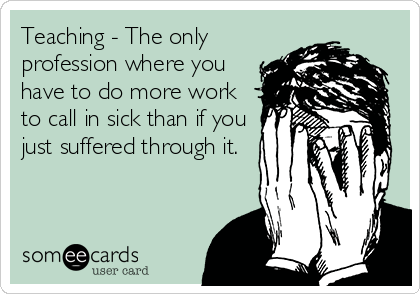 I recently took a condensed version of the Myers-Briggs Type Indicator test. These types of personality tests are great for self analysis and finding a better understanding of yourself. We as teachers love these tests because we use them with our students to help us get to know them better as well. They can also sometimes help us in guiding students towards a career better suited towards their personality.
I recently took a condensed version of the Myers-Briggs Type Indicator test. These types of personality tests are great for self analysis and finding a better understanding of yourself. We as teachers love these tests because we use them with our students to help us get to know them better as well. They can also sometimes help us in guiding students towards a career better suited towards their personality.
My results have roughly been the same every time I’ve taken the test in the past and now. INFJ. This type of personality usually is defined as “The Counselor”, or “The Advocate”, but luckily for me, teacher also falls under this category. It just kind of solidifies my choice of becoming a teacher. Now, how does this help me as a continue my teaching journey? How does this help my students? How can I use this information to become the best teacher version of myself? First, let’s analyze this by each section:
Introversion

Although I am an introvert, it mostly means that I need alone time in order to recharge. I rather be quite in a class and wait out my students than shout over them. I also use other techniques, such as annoying sounds. I can take control of a class verbally, but I prefer not to because it always comes out more aggressive than a teacher should be in my mind and students don’t react well to it. Then when I go home, or I am on prep, I tend to keep to myself and do an activity I like, such as read or watch an episode of a TV show. I don’t like being around large crowds of people in my downtime.
Intuitive
This basically means that I prefer abstract ideas and possibly the big picture rather than focusing on small details and on the concrete. I could see this benefitting me as an English teacher because I rather talk about theories and how things may be perceived rather than, let’s say mathematics which is more concrete. This also helps in motivating students in the way that I rather see what is possible for their future, than concentrate on the realities of their present. They sometimes need that as well because their present situation could prevent them from seeing what is out there for them.
Feeling
I know I make my decisions almost always based on feelings and emotions, not only of myself, but of others. This could be beneficial and harmful as a teacher. I could be passionately moved to help my students and put my whole heart into it, and sometimes that could backfire when a student fails. I take it personally rather than realizing that I could not control everything for them. Sometimes it is flipped in that because of my emotions toward a particular student, my heart may not be as invested, and with that I need to learn how think about how my decisions are affecting my students.
Judging
I don’t like the word chosen for this section because it infers a sense of judgment rather than order that it actually it is. I am very good at planning ahead for a class, again looking at the big picture. I am getting better breaking down my classes in more details in which I am picking when I do certain assignments and how much we are going to read. I also am organized and color code everything. Although my classroom looks like a mess most times, it is organized chaos to me. I know exactly where I keep everything and there is a system in my mind.
INFJ
When these different areas are combined it leads to one of the rarest personality types; 1-3% of people fall under this category. This personality type tends to want to do the right thing and lead the world into a better place. I believe that should be at the heart of a teacher. Do right by our students so that they are the change we want to see in the world. Teachers do not get the credit they deserve in how much impact they have on a student, whether it be negative or positive. Everyone in the world has had a teacher/mentor/counselor of some sort. For myself, I can name bad and good teachers that have lead me to this point in my life and what kind of person I want to be, and what kind of teacher I would like to be for my students.
Sometimes my personality also leads me to wanting to be a problem solver by getting to the root of the problem. This could be an endless spiral down with some students as they have a number of problems, but I have to challenge myself in helping with what I can without diving into the deep end. One such example is when a few of my students get into an argument. I want to get to the root of that problem, but sometimes the class as a whole has to come first and those problems need to be dealt with by a counselor or our dean. I always follow up on these conversations though because I want to know and be prepared if it were to occur again. I know many teachers who the problems with everyone else and never follow up.
Criticism
Although there is no concrete evidence of the testing process and it is definitely not an exact science, sometimes it is better to look at that outsider point of view. Do I believe that we all necessarily fall into these sixteen personality types perfectly, no. But, I do believe that there are consistent tropes in the world and sometimes we fall into them, sometimes we don’t. It is better to know what could be possible in how we learn and converse with others, than to just accept everything as fact. I always take everything I learn with a grain of salt and that has always kept me objective.
Resources

